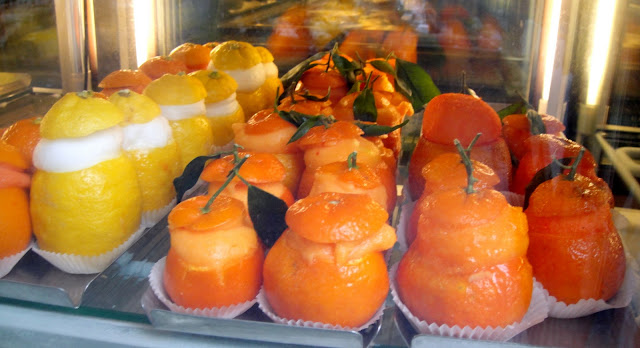Yes, it's officially here.
Jumpers and overcoats get pushed to the bottom of the closet, with cool cotton and light linen beginning to forward in the frontline. Grassy patches are dotted with small daisies, and the balmy Roman air is swirling with pollen and sycamore fuzz (my heart is with you, allergic subjects. This time of year's not equally welcomed). I love spring. Clocks are wound forward, granting longer hours of sunlight; hormones surge and everyone looks happier on their scooters and bicycles.
I like to welcome the onset of primavera with exaggerated enthusiasm, spending lots of time outdoors, rolling around in damp grass with my toddler, and anticipating classic summer recipes.
Quintessence of these (and thrifty re-use of leftovers) is insalata di riso, a pasta salad that employs rice instead of pasta, and many finely chopped ingredients tossed in for flavor (and to clean the fridge).
 |
| Image © Corbis |
300 g (1 1/2 cups or 5 fistfuls) parboiled rice (the grains should not stick)
Either: 250 gr(1 cup) oil-canned tuna, drained and shredded
Or: 2 franks, cooked and sliced in flat buttons
100 g (1/2 cup) slab of regular deli ham, diced
100 g (1/2 cup) Fontina or Swiss cheese, diced
50 g (1/4 cup) black olives, pitted and sliced
1 dill pickle, diced
2 ripe, peeled, seeded tomatoes, diced (optional)
50 g (1/4 cup) artichoke hearts in oil, diced (optional)
1-2 tbsp. cooked peas (optional)
One half yellow bell pepper, minced
2 hard-boiled eggs, sliced or quartered (optional)
1 tbsp. capers (optional)
1 tbsp. fresh basil, minced
50 g (1/4 cup) olive oil or light mayonnaise
1 tbsp. lemon juice
Salt and pepper to taste
Cook the rice in lots of boiling, slightly salted water. Rinse it with cold water, drain and let it cool off. Meanwhile, assemble the remaining ingredients. Once the rice has cooled, combine all the chopped ingredients, rice and dressing in a large serving bowl, and chill the salad in the refrigerator.
My favorite variation is a posh rice salad made with rice, smoked salmon slivers, 2 types of caviar (red and gray) and steamed, shelled baby scampi. I toss everything with a bit of mayo and chill before serving. It's very good.


















